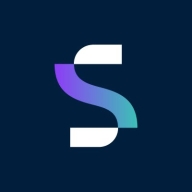

Find out what your peers are saying about Microsoft, Camunda, SAP and others in Business Process Design.


ARIS is the market-leading solution for professional business process management and modeling. Whether you want to document the "as-is" state of your operations for quality or certification reasons or design the "to-be" in terms of continuous improvement in your transformation program, ARIS is the best choice for establishing a single source of truth regarding all process excellence topics in your organization. It is for any organization looking to digitally transform their business, increase operational excellence and customer experience and ensure compliance in execution. ARIS helps you to make the most out of your processes with Process Mining, Risk & Compliance Management, RPA and much more.
What makes the difference?
ARIS is the market-leading solution for any organization and ideally suited to digitally transform the organization, increase operational excellence and customer experience and ensure compliance in execution.
Red Hat OpenShift offers a robust, scalable platform with strong security and automation, suitable for container orchestration, application deployment, and microservices architecture.
Designed to modernize applications by transitioning from legacy systems to cloud-native environments, Red Hat OpenShift provides powerful CI/CD integration and Kubernetes compatibility. Its security features, multi-cloud support, and source-to-image functionality enhance deployment flexibility. While the GUI offers user-friendly navigation, users benefit from its cloud-agnostic nature and efficient lifecycle management. However, improvements are needed in documentation, configuration complexity, and integration with third-party platforms. Pricing and high resource demands can also be challenging for wider adoption.
What are the key features of Red Hat OpenShift?Red Hat OpenShift is strategically implemented for diverse industries focusing on container orchestration and application modernization. Organizations leverage it for migrating applications to cloud-native environments and managing CI/CD pipelines. Its functionality facilitates efficient resource management and microservices architecture adoption, supporting enterprise-level DevOps practices. Users employ it across cloud and on-premises platforms to drive performance improvements.
We monitor all Business Process Design reviews to prevent fraudulent reviews and keep review quality high. We do not post reviews by company employees or direct competitors. We validate each review for authenticity via cross-reference with LinkedIn, and personal follow-up with the reviewer when necessary.